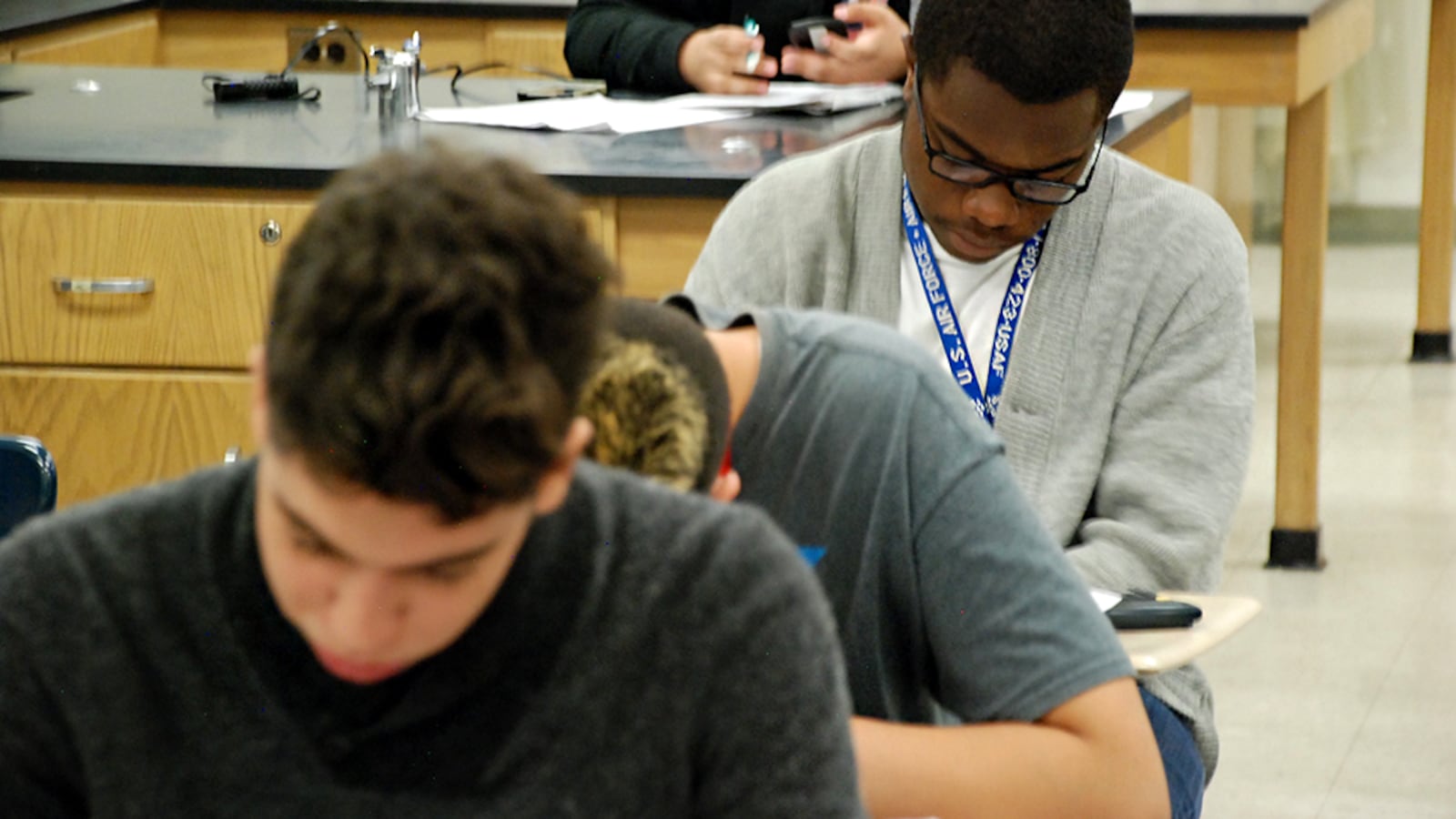More than a year after a coalition of nonprofit groups issued a report critical of Aurora Public Schools, a follow-up released Wednesday reveals not much has changed.
Only one of five Aurora middle school students can read and write at grade level, states the new report published by the nonprofit A-Plus Colorado.
Graduation rates have increased slightly but available data still show only one in four students who start ninth grade in the district go on to enroll in college. And of those who do, half of them are not prepared for college-level coursework.
“Change — drastic change — is imperative,” the report says.
Last year, the school district released its own counter-report to outline the district’s recent reforms. But this year, Aurora Superintendent Rico Munn was sharply critical of A-Plus Colorado, which published the report alone this year. The first report in 2015 was published by a group of 17 nonprofits with ties to either public education or Aurora or both.
“Organizations such as A+ demand that school districts see the world through their lens and follow their particular directives,” Munn said in a statement. “Their focus on ‘facts’ is a thinly-veiled effort to secure funding, promote their agenda and expand their brand on the backs of Aurora students.”
Van Schoales, executive director of A-Plus Colorado, said the claim was “bizarre.”
“It speaks volumes about the focus of the school district that they’re trying to deflect from their poor performance instead of taking responsibility,” Schoales said.
Hanni Raley, director of systems advocacy for ARC of Aurora, one of the organizations that was part of the coalition to issue the 2015 report, said that she still believes the district is making progress, but that reports like Wednesday’s help keep everyone accountable.
“It’s all of our jobs to continue to make those improvements and to provide those recommendations,” Raley said. “I think it’s hard to be critiqued, but we know it’s important to keep the conversation going because it is about the kiddos.”
Munn’s statement went on to defend the school district’s work, saying “APS is aggressively implementing a reform strategy.” He also pointed to positive developments, including a rising high school graduation rate, decreasing dropout rates and a decrease in student discipline.
The graduation and dropout rates are included in the A-Plus report. But Schoales said the graduation rate is “hollow” if student achievement isn’t also improving.
Munn was hired in 2013 to help improve the district’s low scores on state performance ratings. According to a report the district published in 2015 to counter the first report, Aurora schools have been working on reforms since 2013 when district leaders created a new strategic plan. Some efforts like grouping a number of low performing schools into a zone that gave the principals increased autonomy was started more recently.
But Aurora Public Schools received lower scores on the state rating in 2016 than it did in 2013 or 2014. If the district doesn’t improve those state ratings after results from this school year, it would face state sanctions in 2018.
Wednesday’s report provides four recommendations for the district to improve. The recommendations mostly echo those from 2015. They include:
- Increasing engagement from school officials and the community for turning around struggling schools
- Developing a school rating system to make school performance data more accessible
- Adding high-quality schools of all types including district-run schools, charter schools and innovation schools, with a clear process for approving and managing them. Charter schools are publicly funded but independently operated, and innovation schools are run by districts but with many of the freedoms of charters.
- Re-writing the district’s strategic plan to link goals and values to measurable student achievement data
The report also highlighted some schools that, according to the organization’s analysis, are doing better than most schools in the district. Among the high schools named are Lotus School for Excellence, a charter school, William Smith High School, a small alternative high school program, and Rangeview High School, a traditional district-run school.
“It is clear that there are practices within APS that are driving better outcomes,” the report states. “This is another opportunity for the district to look for lessons and facilitate the sharing of best practices across the district.”

